Who is big in the USA?
After extensive work to speed up calculation of the cost-basis indicator, we are now able to cover global stocks in both depth and breadth.
It was 4th July last week, so I am celebrating going global with a Savvy Yabby special edition on sentiment in the Magnificent Seven, as our coverage expands to the USA.
Why look at the cost-basis indicator?
I think everybody has clocked this, but it can help to introduce an objective measure to finger where exactly sentiment is strong or weak in the US market.
Remember, that investors only rarely pay attention to valuations, and this happens most often at turning points. The study of unrealized profit and loss signals can help finger such turns.
As I explained in my introductory wire:
The role of sentiment in iron-ore stocks
the market has a hidden factor which influences investor sentiment.
This is the feel-good "wealth effect" of how much money investors have made on their positions, assuming that these are in profit, and not in loss.
Of course, we are counting "paper gains" not realized profits or losses, but you have only to reflect for a moment on your own portfolio to know how important this factor can be.
When most investors are winning, on paper, we have a bull market.
When most investors are losing, on paper, we have a bear market.
The indicator I developed way back in 2002 captures this effect.
Originally, it was only available to institutional investors, but improvements in our calculation methods have now made it scalable to global coverage.
The US bull market is really a large capitalization story
After computing the cost-basis indicator, using the entire available trading history of some 2250 liquid US stocks (those trading an average of > $1M USD per day), we can share this.
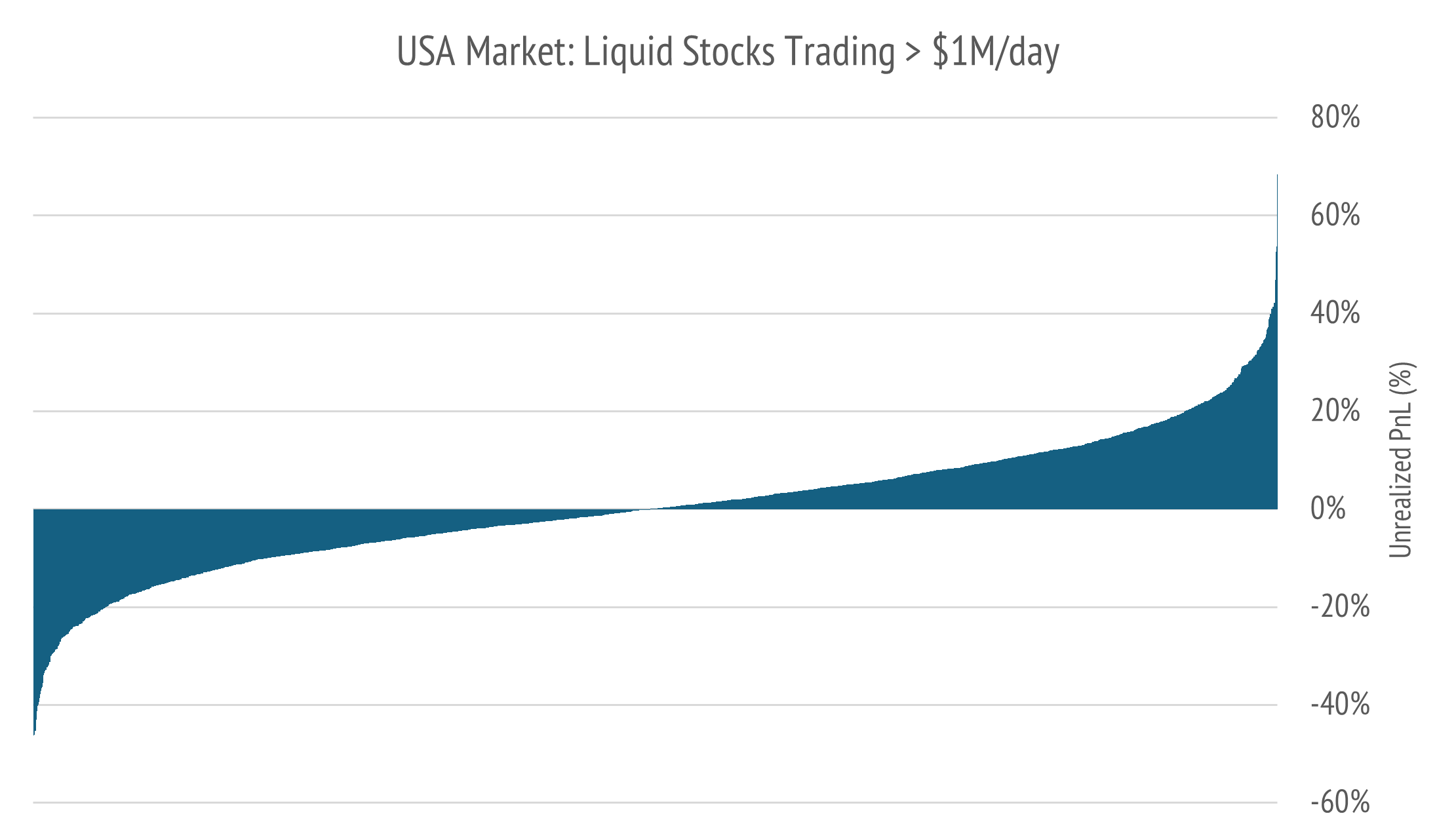
This is simply the 2250 stocks individually ranked by unrealized profit. I have dropped the tickers so you can just observe the overall pattern. It is pretty balanced.
In short, the US market has not been a good place for equal weight dartboard investors.
To bring this into sharp relief, here is the sectoral story by size band of company.
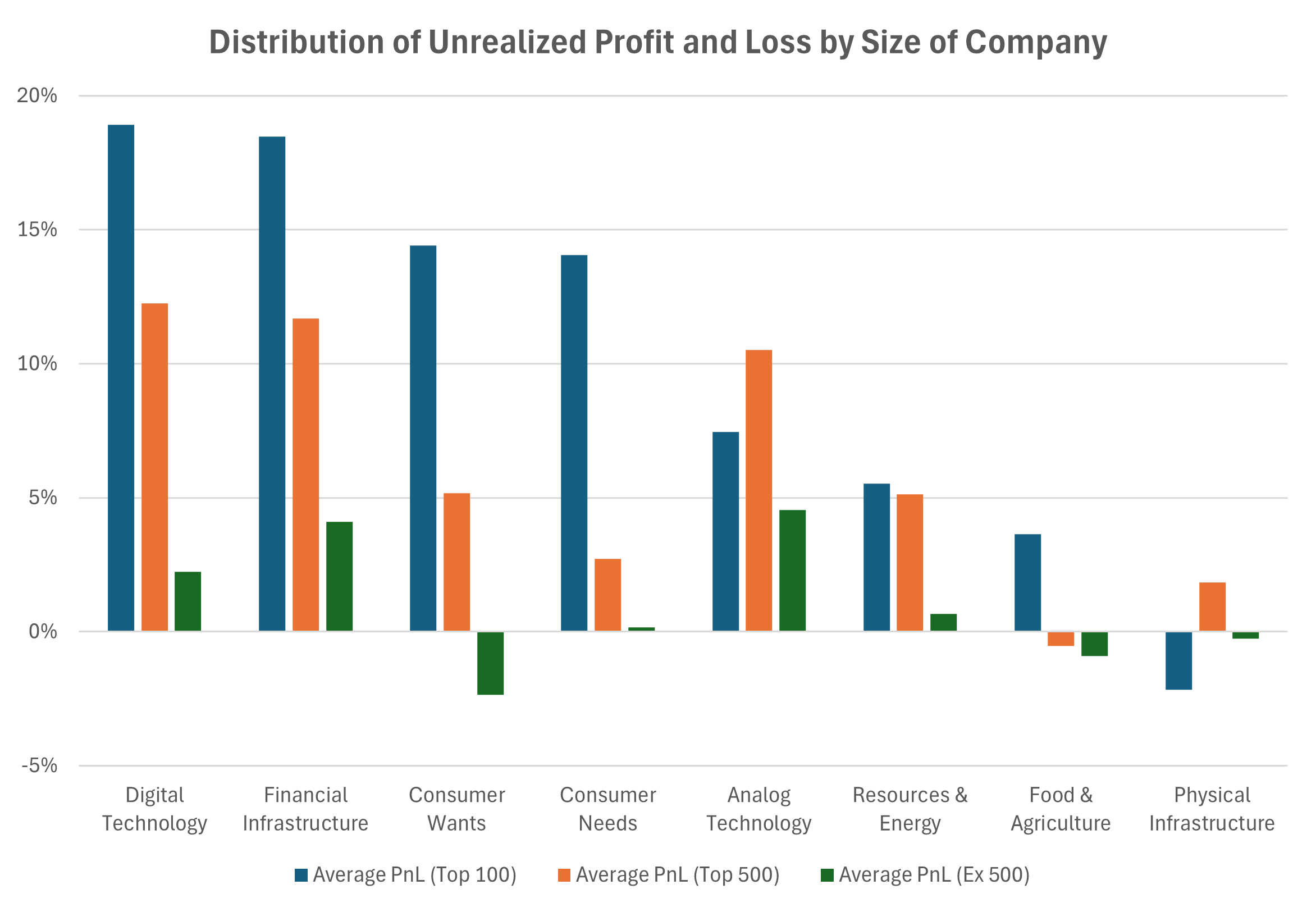
For each of our ten economic super sectors, the typical US investor has done best by tilting to the large-cap end of the market, while piling into digital, finance and consumer stocks.
Outside of the mid-cap industrial sector (Analog Technology) it has been rough sledding.
Obviously, this is now a mature bull market in the large-cap stocks.
The Magnificent Seven lead commentary, so let us zero in on them.
How are The Magnificent Seven travelling?
The Magnificent Seven comprise the mega cap digital plays.
Microsoft NASDAQ: MSFT
Apple NASDAQ: AAPL
Nvidia NASDAQ: NVDA
Alphabet NASDAQ: GOOGL
Amazon NASDAQ: AMZN
Meta NASDAQ: META
Tesla NASDAQ: TSLA
Each of these names has done well for the average investor.
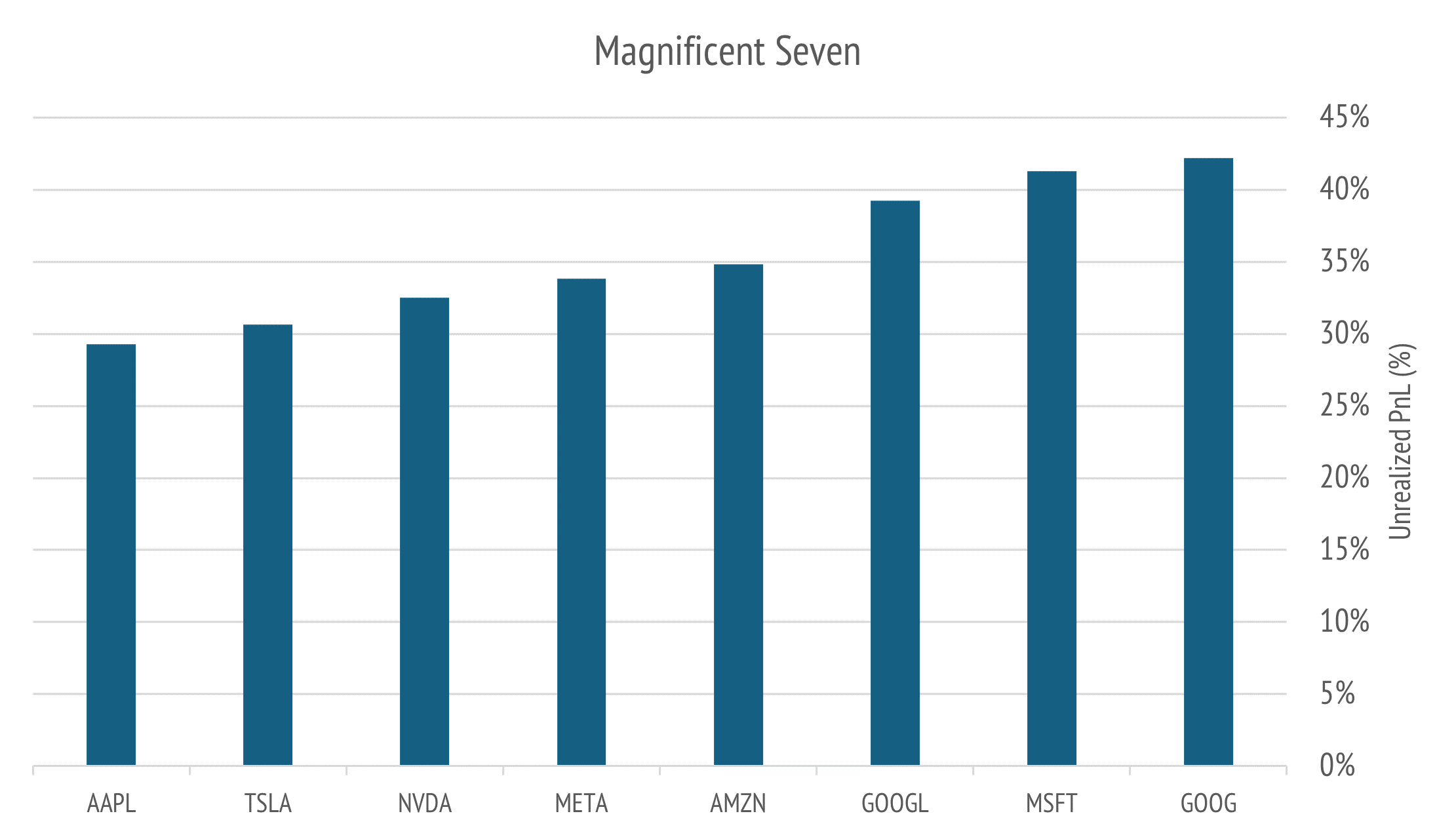
Let us look at just a few in detail.
Nvidia is the standout for price return, but investors have been eagerly taking some money off the table, which is why the unrealized profit buffer is lower than the more sedate Alphabet.
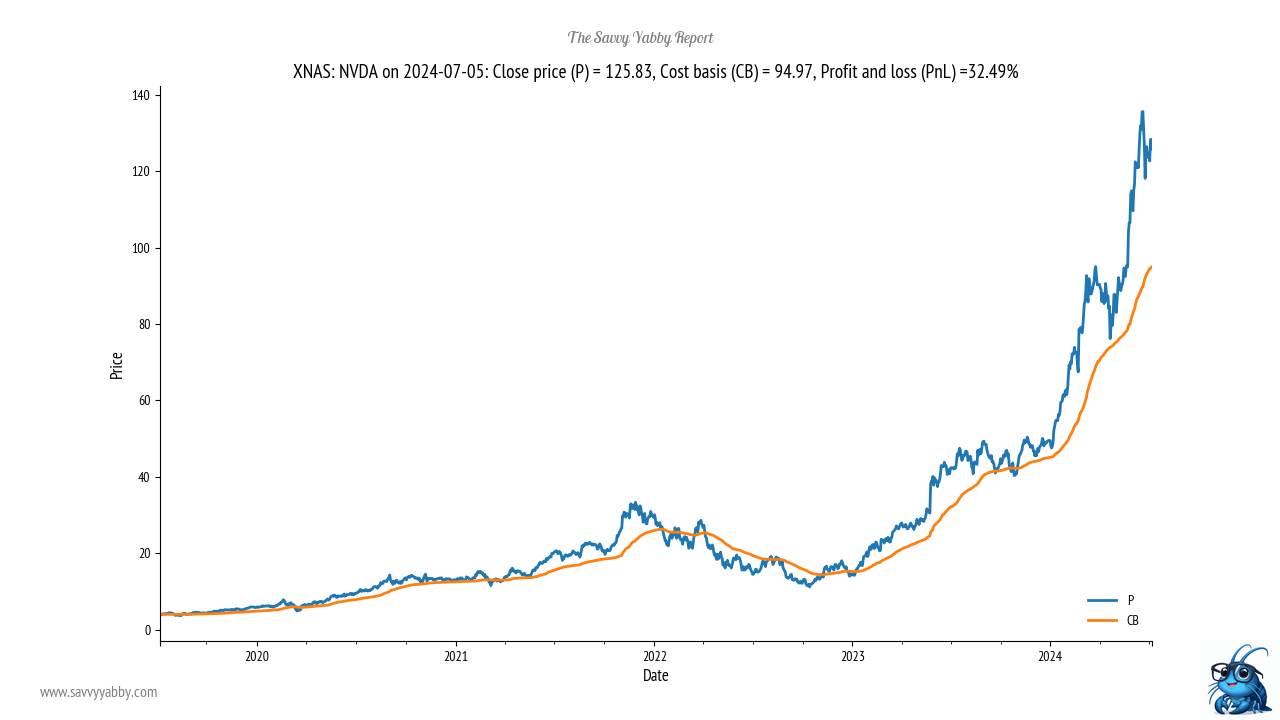
In the very short run, this may be time to fade that last big rally.
Alphabet stumbled with the Bard launch more than a year ago but has since recovered.
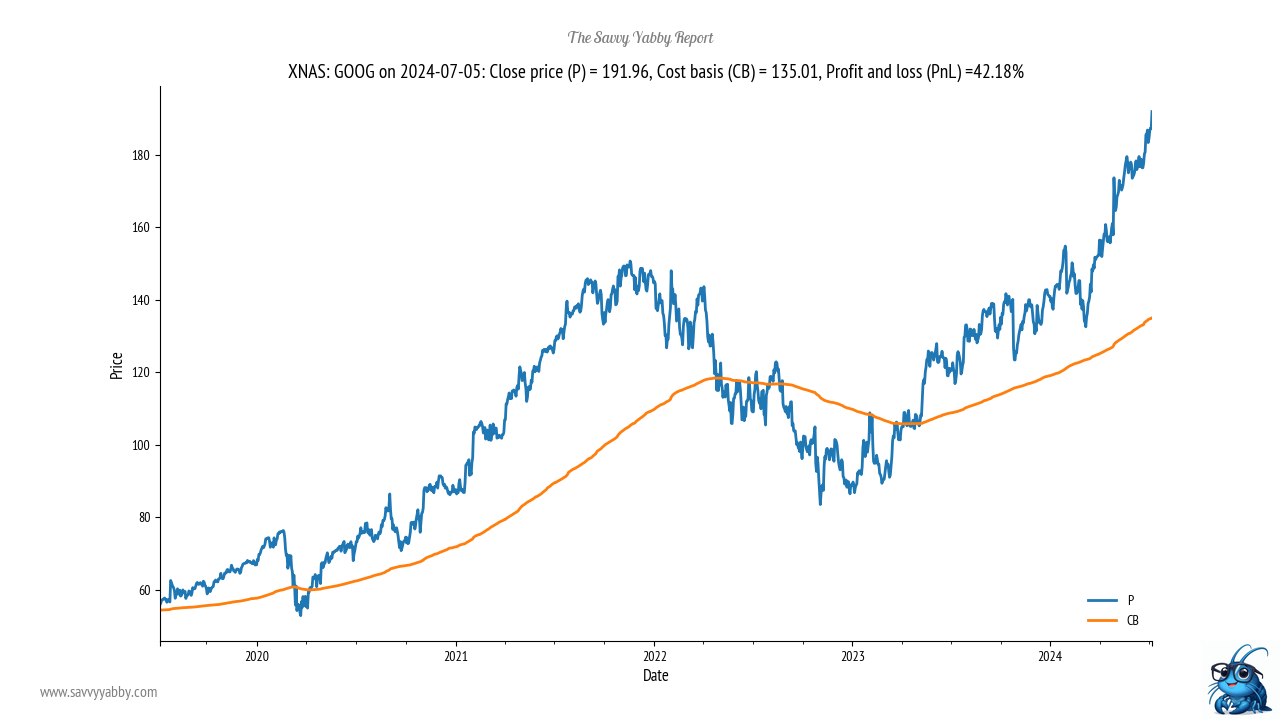
Microsoft remains a stalwart with a very steady performance.
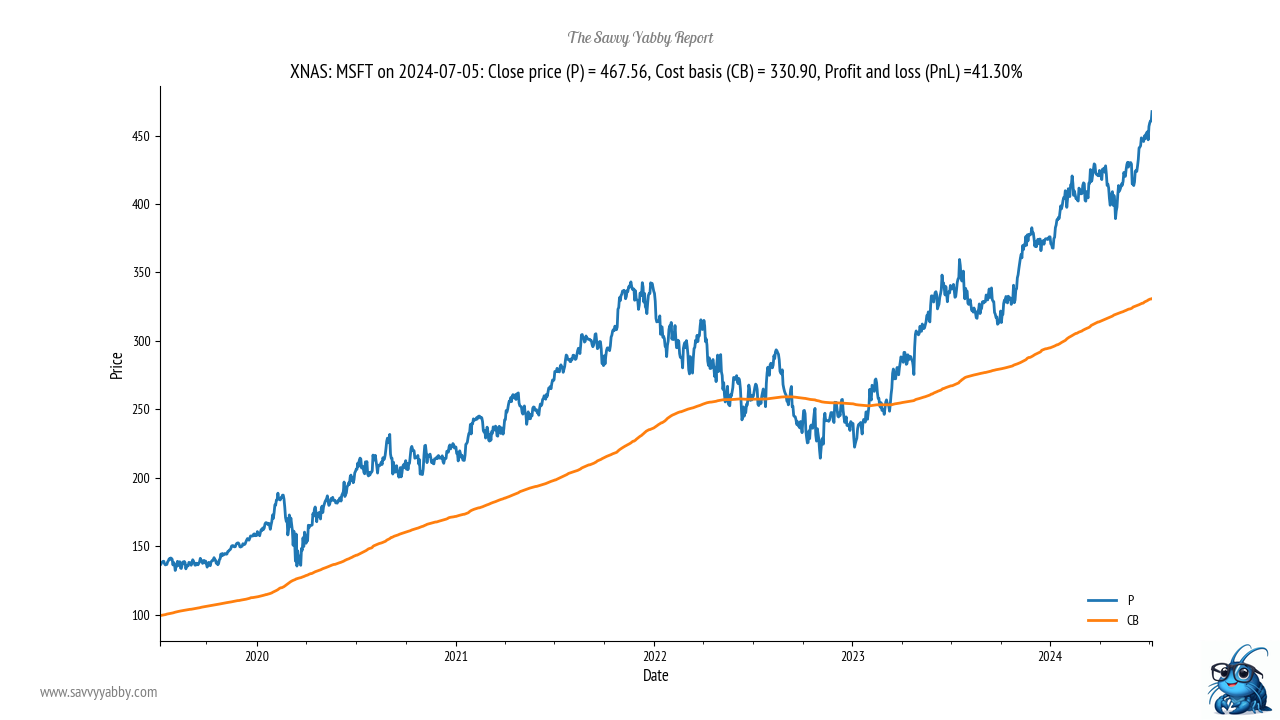
For the riskier story in town, let us look at Tesla.

The much higher volatility in Tesla sentiment shows clearly in the profit and loss chart.
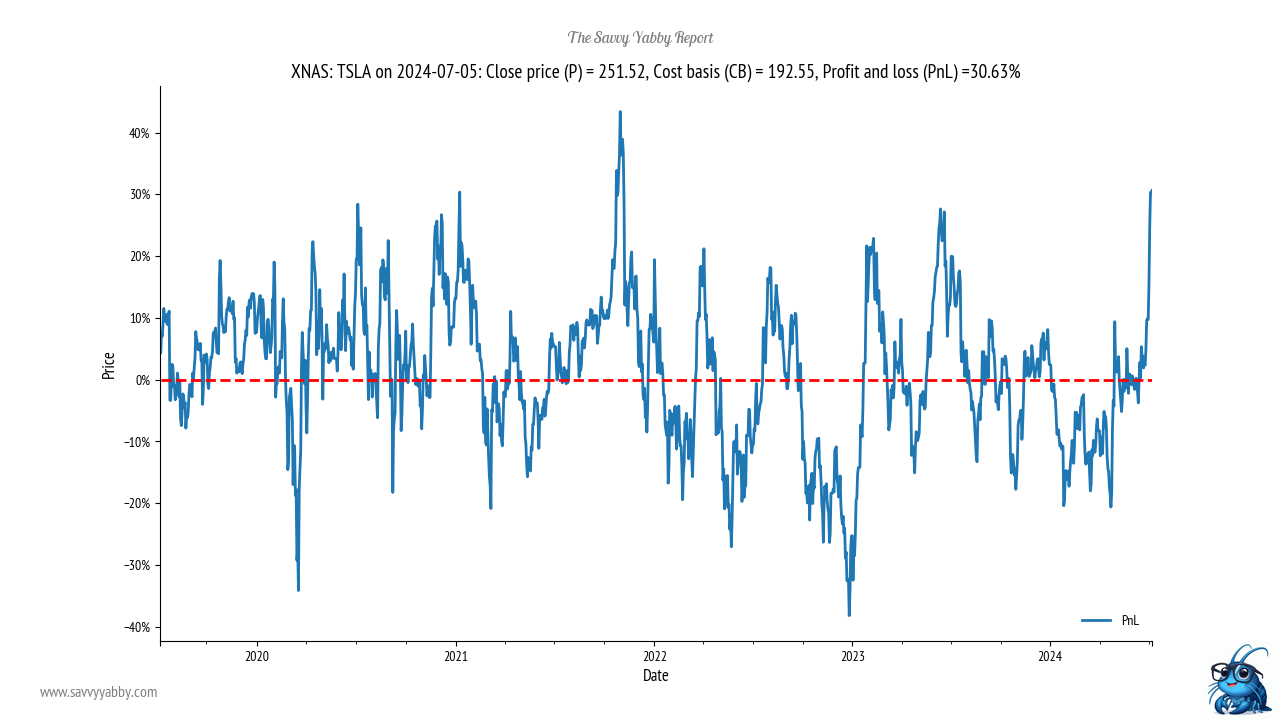
I am a (relatively) contented Tesla Model 3 owner, but I have never owned that stock.
The above chart shows why.
It is over-traded, which means the bulk of investors are in and out on short time frames.
Whenever a significant unrealized profit arises, it looks like one should take that.
That time is now, so we would be seller of the stock on this excitement high.
Elon said something. The stock moved. Traders will soon move to fade that rally.
Conclusion
The cost-basis indicator is new to many even though it was invented 22 years ago.
At that time, computing power, and the exigencies of an industry addicted to print media, made it difficult to distribute such content.
After considerable internal R&D effort, I have managed to parallelize the computation of the cost-basis indicator, and its derivatives.
This includes maps of investor concentration in the price-of-entry space that naturally create clusters of support and resistance behaviour in trading activity.
You will find this, and more, rolled out through my firm over the coming months.
Happy investing, and may the Yabby be with you!
Cover photo by Caleb Weiner on Unsplash.
Yabby character by Atelier Mongol.
3 topics
7 stocks mentioned

